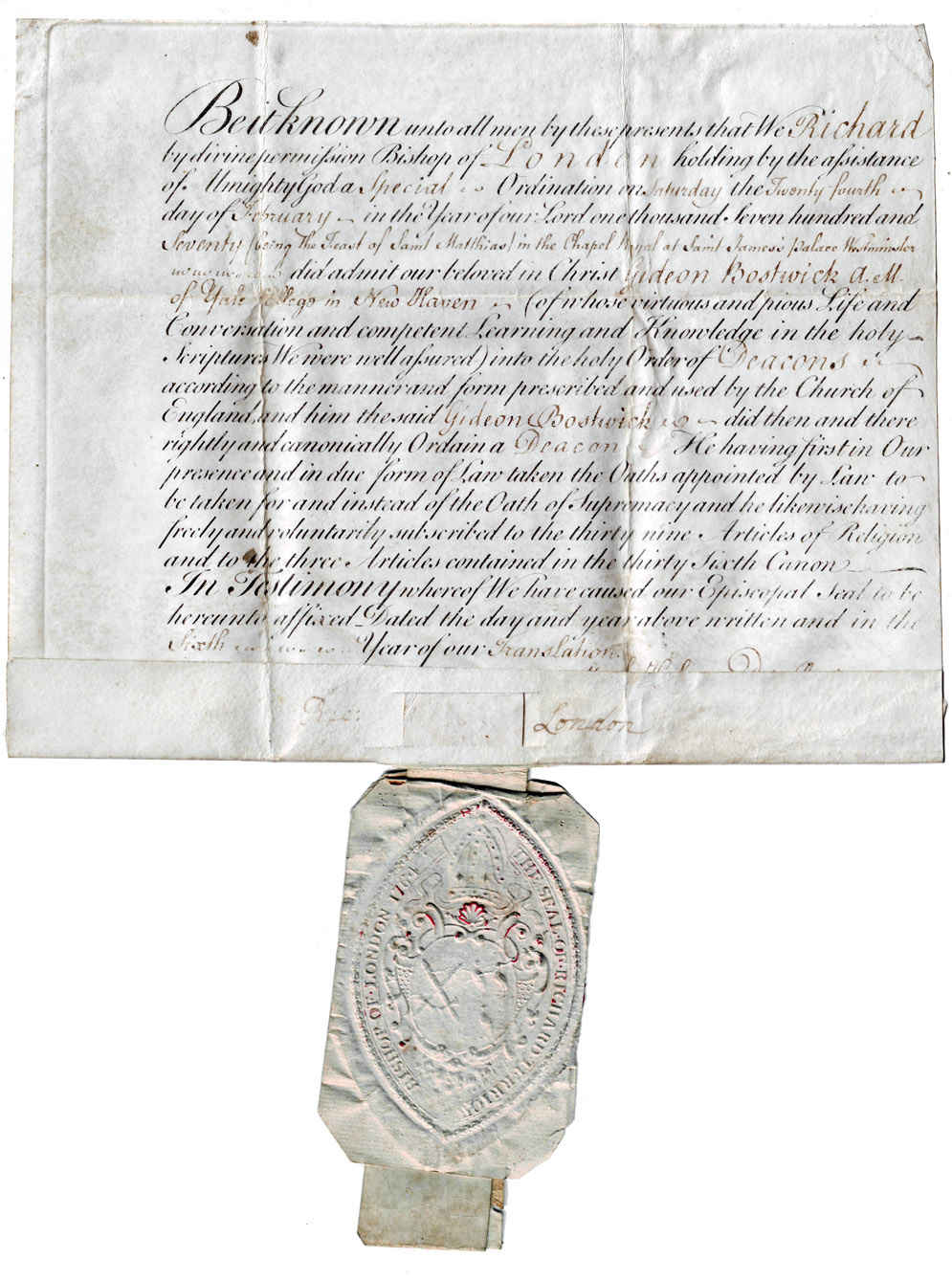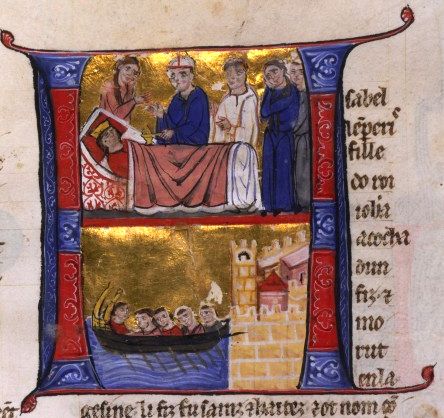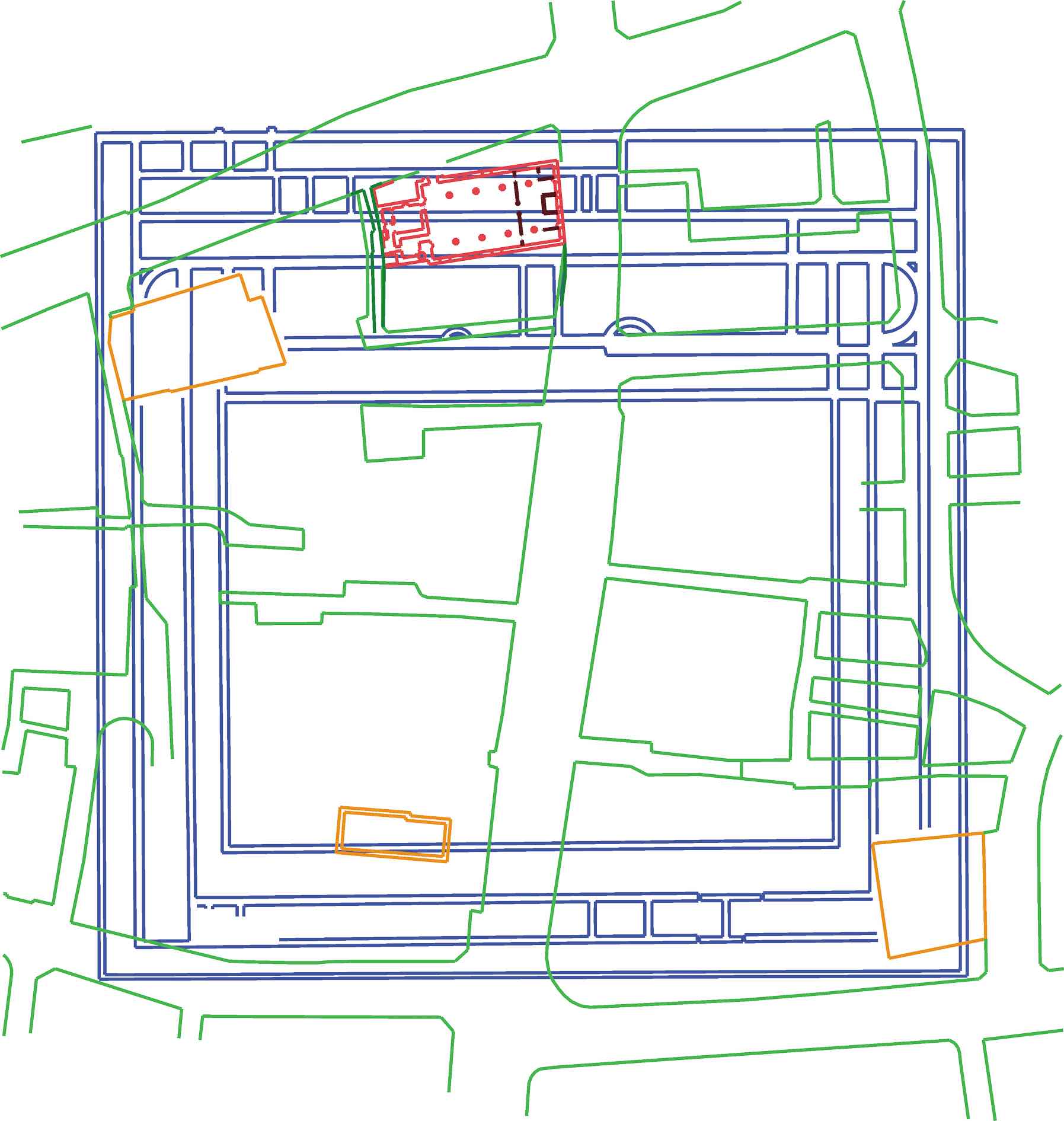|
Eustace Of Fauconberg
Eustace of Fauconberg was a medieval English Bishop of London from 1221 to 1228 and was also Lord High Treasurer. Biography Eustace was the son of Walter de Fauconberg of Rise-in-Holderness in the East Riding of the English county of Yorkshire. Eustace was selected as treasurer in 1217, probably on 4 November, and held the office until his death.Fryde, et al. ''Handbook of British Chronology'' p. 103 He held the prebend of Holbourn in the diocese of LondonGreenway Fasti Ecclesiae Anglicanae 1066–1300: Volume 1, St. Paul's, London: Bishops' before being elected to the see of London on 26 February 1221 and consecrated on 25 April 1221.Fryde, et al. ''Handbook of British Chronology'' p. 258 Eustace died between 24 and 31 October 1228. There was a tomb memorial to him in the quire at Old St Paul's Cathedral Old St Paul's Cathedral was the cathedral of the City of London that, until the Great Fire of London, Great Fire of 1666, stood on the site of the present St Paul's Ca ... [...More Info...] [...Related Items...] OR: [Wikipedia] [Google] [Baidu] |
Bishop Of London
The bishop of London is the Ordinary (church officer), ordinary of the Church of England's Diocese of London in the Province of Canterbury. By custom the Bishop is also Dean of the Chapel Royal since 1723. The diocese covers of 17 boroughs of Greater London north of the Thames, River Thames (historically the City of London and the County of Middlesex) and a small part of the County of Surrey (the district of Borough of Spelthorne, Spelthorne, historically part of Middlesex). The Episcopal see, see is in the City of London, where the seat is St Paul's Cathedral, which was founded as a cathedral in 604 and was rebuilt from 1675 following the Great Fire of London (1666). Third in seniority in the Church of England after the archbishops of Archbishop of Canterbury, Canterbury and Archbishop of York, York, the bishop is one of five senior bishops who sit as of right as one of the 26 Lords Spiritual in the House of Lords (for the remaining diocesan bishops of lesser rank, seats are ... [...More Info...] [...Related Items...] OR: [Wikipedia] [Google] [Baidu] |
Holborn
Holborn ( or ), an area in central London, covers the south-eastern part of the London Borough of Camden and a part (St Andrew Holborn (parish), St Andrew Holborn Below the Bars) of the Wards of the City of London, Ward of Farringdon Without in the City of London. The area has its roots in the civil parish#Ancient parishes, ancient parish of Holborn, which lay on the west bank of the now buried River Fleet; the district takes its name from an alternative name for the river: the Holbourne (or Oldbourne). The area is sometimes described as part of the West End of London or of the wider West London area. The River Fleet also gave its name to the streets ''Holborn'' and ''High Holborn'' which extend west from the site of the former Newgate in the London Wall, over the Fleet, through Holborn and towards Westminster. The district benefits from a central location which helps provide a strong mixed economy. The area is particularly noted for its links to the legal profession, for the ... [...More Info...] [...Related Items...] OR: [Wikipedia] [Google] [Baidu] |
1228 Deaths
Year 1228 ( MCCXXVIII) was a leap year starting on Saturday of the Julian calendar. Events By place Sixth Crusade * Summer – Emperor Frederick II sails from Brindisi with a expeditionary force and arrives in Acre in the Middle East on September 7. He disembarks a well-trained and equipped Crusader army (some 10,000 men and 2,000 knights). After his arrival in Palestine, Frederick is again excommunicated by Pope Gregory IX, for setting out for the Crusade before he has obtained absolution from his previous ex-communication (see 1227). Many of the local nobility, the Knights Templar and Knights Hospitaller deny him their support for the Crusade. Frederick can only rely on his own army and the Teutonic Knights, whose Grand Master, Hermann von Salza, is his friend. * Autumn – Frederick II receives an embassy of Sultan Al-Kamil, including Fakhr al-Din ibn as-Shaikh, at the Hospitaller camp at Recordane, near Acre. Meanwhile, Al-Kamil is engaged in suppressi ... [...More Info...] [...Related Items...] OR: [Wikipedia] [Google] [Baidu] |
People From Holderness
The term "the people" refers to the public or common mass of people of a polity. As such it is a concept of human rights law, international law as well as constitutional law, particularly used for claims of popular sovereignty. In contrast, a people is any plurality of persons considered as a whole. Used in politics and law, the term "a people" refers to the collective or community of an ethnic group or nation. Concepts Legal Chapter One, Article One of the Charter of the United Nations states that "peoples" have the right to self-determination. Though the mere status as peoples and the right to self-determination, as for example in the case of Indigenous peoples (''peoples'', as in all groups of indigenous people, not merely all indigenous persons as in ''indigenous people''), does not automatically provide for independent sovereignty and therefore secession. Indeed, judge Ivor Jennings identified the inherent problems in the right of "peoples" to self-determination, as ... [...More Info...] [...Related Items...] OR: [Wikipedia] [Google] [Baidu] |
Bishops Of London
The bishop of London is the ordinary of the Church of England's Diocese of London in the Province of Canterbury. By custom the Bishop is also Dean of the Chapel Royal since 1723. The diocese covers of 17 boroughs of Greater London north of the River Thames (historically the City of London and the County of Middlesex) and a small part of the County of Surrey (the district of Spelthorne, historically part of Middlesex). The see is in the City of London, where the seat is St Paul's Cathedral, which was founded as a cathedral in 604 and was rebuilt from 1675 following the Great Fire of London (1666). Third in seniority in the Church of England after the archbishops of Canterbury and York, the bishop is one of five senior bishops who sit as of right as one of the 26 Lords Spiritual in the House of Lords (for the remaining diocesan bishops of lesser rank, seats are attained upon vacancy, determined by chronological seniority). The other four senior bishops are the archbishop of ... [...More Info...] [...Related Items...] OR: [Wikipedia] [Google] [Baidu] |
Anglo-Normans
The Anglo-Normans (, ) were the medieval ruling class in the Kingdom of England following the Norman Conquest. They were primarily a combination of Normans, Bretons, Flemings, French people, Frenchmen, Anglo-Saxons and Celtic Britons. After the conquest the victorious Normans formed a ruling class in England, distinct from (although intermarrying with) the native Anglo-Saxon and Celtic populations. Over time, their language evolved from the continental Old Norman to the distinct Anglo-Norman language. Anglo-Normans quickly established control over all of England, as well as Norman invasion of Wales, parts of Wales (the Cambro-Normans, Welsh-Normans). After 1130, parts of southern and eastern Scotland came under Anglo-Norman rule (the Scoto-Norman, Scots-Normans), in return for their support of David I of Scotland#Government and feudalism, David I's conquest. The Anglo-Norman invasion of Ireland from 1169 saw Anglo-Normans and Cambro-Normans conquer swaths of Ireland, becomi ... [...More Info...] [...Related Items...] OR: [Wikipedia] [Google] [Baidu] |
Old St Paul's Cathedral
Old St Paul's Cathedral was the cathedral of the City of London that, until the Great Fire of London, Great Fire of 1666, stood on the site of the present St Paul's Cathedral. Built from 1087 to 1314 and dedicated to Paul of Tarsus, Saint Paul, this building was perhaps the fourth such church at this site on Ludgate Hill, going back to the 7th century. Work on the cathedral began after a Early fires of London#Norman, fire in 1087, which destroyed the previous church. Work took more than 200 years, and over that time the architecture of the church changed from Norman Romanesque to early English Gothic. The church was Consecration, consecrated in 1240, enlarged in 1256 and again in the early 14th century. At its completion in the mid-14th century, the cathedral was one of the List of longest church buildings in the world, longest churches in the world, had List of tallest churches in the world, one of the tallest spires and some of the finest stained glass. The continuing pre ... [...More Info...] [...Related Items...] OR: [Wikipedia] [Google] [Baidu] |
Choir (architecture)
A choir, also sometimes called quire, is the area of a church or cathedral that provides seating for the clergy and church choir. It is in the western part of the chancel, between the nave and the sanctuary, which houses the altar and Church tabernacle. In larger medieval churches it contained choir-stalls, seating aligned with the side of the church, so at right-angles to the seating for the congregation in the nave. Smaller medieval churches may not have a choir in the architectural sense at all, and they are often lacking in churches built by all denominations after the Protestant Reformation, though the Gothic Revival revived them as a distinct feature. As an architectural term "choir" remains distinct from the actual location of any singing choir – these may be located in various places, and often sing from a choir-loft, often over the door at the liturgical western end. In modern churches, the choir may be located centrally behind the altar, or the pulpit. The place w ... [...More Info...] [...Related Items...] OR: [Wikipedia] [Google] [Baidu] |
Diocese Of London
The Diocese of London forms part of the Church of England's Province of Canterbury in England. It lies directly north of the Thames, covering and all or part of 17 London boroughs. This corresponds almost exactly to the historic county of Middlesex. It includes the City of London in which lies its cathedral, St Paul's, and also encompasses Spelthorne which is currently administered by Surrey. It encompasses most of that part of Greater London which lies north of the River Thames and west of the River Lea. The diocese covered all of Essex until 1846 when Essex became part of the Diocese of Rochester, after which St Albans and since 1914 forms the Diocese of Chelmsford. It also formerly took in southern and eastern parts of Hertfordshire. The ''Report of the Commissioners appointed by his Majesty to inquire into the Ecclesiastical Revenues of England and Wales'' (1835), noted the annual net income for the London see was £13,929. This made it the third wealthiest ... [...More Info...] [...Related Items...] OR: [Wikipedia] [Google] [Baidu] |
Prebend
A prebendary is a member of the Catholic or Anglican clergy, a form of canon with a role in the administration of a cathedral or collegiate church. When attending services, prebendaries sit in particular seats, usually at the back of the choir stalls, known as prebendal stalls. History At the time of the Domesday Book in 1086, the canons and dignitaries of the cathedrals of England were supported by the produce and other profits from the cathedral estates.. In the early 12th century, the endowed prebend was developed as an institution, in possession of which a cathedral official had a fixed and independent income. This made the cathedral canons independent of the bishop, and created posts that attracted the younger sons of the nobility. Part of the endowment was retained in a common fund, known in Latin as ''communia'', which was used to provide bread and money to a canon in residence in addition to the income from his prebend. Most prebends disappeared in 1547, when nearl ... [...More Info...] [...Related Items...] OR: [Wikipedia] [Google] [Baidu] |






